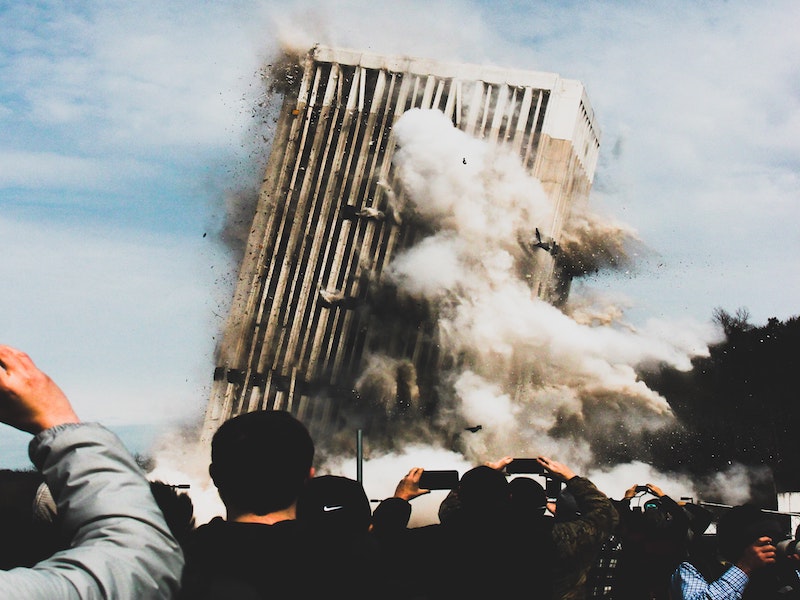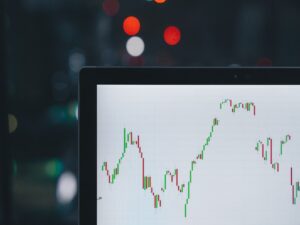The collapse of Easter Islands’ civilisation gives a hint of what may be in store for us
As the twenty-first century progresses, the climate crisis is going to lead to increasingly hostile weather extremes like droughts, heat waves, and floods. So hostile are potential future conditions that social collapse is a distinct possibility. But what exactly does collapse look like? Easter Islands’ civilisation provides us with an insight into what may be in store for us.
In Collapse, Jared Diamond describes how the Easter Islanders’ thriving, complex civilisation transformed into one of dejection, misery, and, ultimately, collapse. Easter Island was once home to as many as 30,000 people. The best estimate for when the Polynesians settled on Easter Island is around 1,100 years ago. Easter Island is famous for its giant stone statues (known as Moai). The average statue is 13 feet tall and weighs 10 tons. These statues were built to honour the dead and had important cultural significance for the Polynesians. Chiefs commissioned the statues and would try and outdo one another in building larger and larger Moai.
When the Polynesians first arrived on Easter Island, it was a subtropical forest full of tall trees. They built seagoing canoes from the trees to harvest porpoises, a staple of the Easter Islanders’ diet. The trees were also used to construct housing and to construct and transport the Moai.
The culture that became cemented on Easter Island depended on an abundant supply of wood. But their mismanagement of this vital resource meant that the island was deforested within a few hundred years. As tree species became extinct, the Easter Islanders were forced to stop work on the Moai. It was no longer possible to build canoes, so they began hunting seabirds and nearshore fish for food. They soon ate their way through these, as well. The situation became dire because the loss of trees left the land vulnerable to soil erosion by wind and rain, leading to crop yields plummeting. Lacking wild food and the ability to grow it, the starving Easter Islanders turned to cannibalism. Visiting the island in 1774, Captain Cook “described the islanders as ‘small, lean, timid, and miserable.’” With the threat of being eaten, who can blame them for their misery?
The most compelling part of the sorry story is that:
“Easter’s chiefs and priests had previously justified their elite status by claiming relationship to the gods, and by promising to deliver prosperity and bountiful harvests. They buttressed that ideology by monumental architecture and ceremonies designed to impress the masses, and made possible by food surpluses extracted from the masses. As their promises were being proved increasingly hollow, the power of the chiefs and priests was overthrown around 1680 by military leaders called matatoa, and Easter’s formerly complexly integrated society collapsed in an epidemic of civil war.”
Collapse, p. 109
How could the Easter Islanders’ civilisation disintegrate so spectacularly? While no one knows for sure, the structure of society can help us speculate how their civilisation collapsed.
When the Polynesians first arrived on the island, they saw what appeared to be an abundant supply of trees and their culture and ideology formed in response to the environmental conditions that prevailed. The social hierarchy became dependent on and intertwined with the forest, which allowed the civilisation to develop as it did. In hindsight, you could argue the Easter Islanders were irresponsible beyond belief to dedicate so much of their primary resource to honour the dead. Yet, the ideology that developed meant wood was not only vital in providing basic needs such as food and shelter. Building Moai was an important cultural element of the civilisation and helped justify the social order.
This is why culture can only be understood within the reality from which it develops. For the Easter Islanders, building Moai was a crucial tradition that bound society together. In a similar situation to the one we find ourselves in, it’s difficult to imagine the Easter Islanders were hellbent on destroying the integrity of the environment that sustained their society. But their failure to adapt is an example of how ideology can become maladaptive.
Being so wasteful with their primary resource led to a change in the environment — they were running out of forest. That change made it necessary for the Easter Islanders to re-adapt in response to shortages. The adaptation required was seemingly simple — they had to focus on conserving the forest to ensure trees didn’t become extinct. An obvious adaptation would have been to stop building Moai well before they did. It’s when ideology resists adaptation and locks in the behaviour that is causing the problem that it becomes maladaptive. As was the case with the Easter Islanders, the result of maladaptive behaviour is that societies can decline and ultimately collapse.
Given humans have foresight, the Easter Islanders must have known that should they continue to chop down trees, it was likely to lead to all kinds of unintended consequences, but they continued to do so anyway. By locking in maladaptive behaviour, the Easter Islanders sowed the seeds of their own destruction. But what hurled the society into disarray was when it dawned on people that the ideology sustaining society was the very same ideology that had destroyed the conditions the civilisation depended on. As soon as people realised their reality, their truth about the world, was the thing that had led to their demise; the social system disintegrated. The power of the chiefs and priests who gained authority through the belief systems was overthrown. In this new reality, one where the belief systems no longer applied, their elevated social status meant little.
The collapse of the Polynesian civilisation illustrates how the strength of society in creating a resilient system can become a debilitating weakness if ideology compels maladaptive behaviour that undermines the environmental conditions the civilisation depends on. Even if it meant social collapse further down the line, society was locked into a way of doing things. The parallels between Easter Island and the modern world are eerily striking. As Diamond puts it:
“Thanks to globalization, international trade, jet planes, and the Internet, all countries on Earth today share resources and affect each other…Polynesian Easter Island was as isolated in the Pacific Ocean as the Earth is today in space. When the Easter Islanders got into difficulties, there was nowhere to which they could flee, nor to which they could turn for help; nor shall we modern Earthlings have recourse elsewhere if our troubles increase. Those are the reasons why people see the collapse of Easter Island society as a metaphor, a worst-case scenario, for what may lie ahead of us in our own future.”
Collapse, p. 119
We’re facing a set of interconnected crises that “may reduce the resilience of our global ecosystem and its ability to provide for human needs.” Civilisations that have collapsed previously were isolated from one another. Today, “the possibility that our global society may suffer decline makes this a “no-analogue” period in human history in which massive social or environmental failure in one region can threaten the entire system.” Fail to adapt, and modern society could collapse on a global scale. This would lead to massive unrest, the breakdown of social order and unimaginable suffering — no one wants that — and yet the Easter Islanders demonstrate why there is no guarantee that we’ll make the appropriate adaptations.



